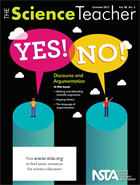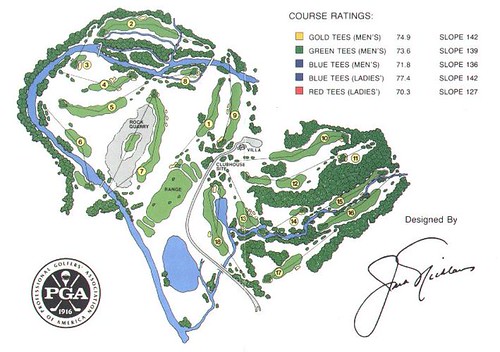Winner of the REVERE Award from PreK-12 Learning Group, Association of American Publishers!
Winner of the REVERE Award from PreK-12 Learning Group, Association of American Publishers!
Winner of the REVERE Award from PreK-12 Learning Group, Association of American Publishers!
Winner of the REVERE Award from PreK-12 Learning Group, Association of American Publishers!
Building on prior experience
By Peggy Ashbrook
Posted on 2013-07-13
 This month I was able to spend unstructured time with a 2.5 year old and her family. In my position as an observer, not teacher, care-giver or parent, I could enjoy only observing—observing without a purpose outside my own interest. This open-ended vacation mode of observation may not have sharpened my thinking or provoke deep understanding but it allowed me to think for a long time about how children wonder and ask questions about their environment.
This month I was able to spend unstructured time with a 2.5 year old and her family. In my position as an observer, not teacher, care-giver or parent, I could enjoy only observing—observing without a purpose outside my own interest. This open-ended vacation mode of observation may not have sharpened my thinking or provoke deep understanding but it allowed me to think for a long time about how children wonder and ask questions about their environment.
For example, she asked some questions that showed how curious she is about the world. “Momma, why are there numbers on the microwave?” (I was surprised that she knew the symbols were numbers!) And she said this about the staples holding an inexpensive paperback book together: “Why do they have these pins in here?” The answers about the function of the numbers for counting, and the function of the staples (new word for her) for holding, related to familiar concepts.
She was identifying an object or phenomena of interest and expressing her interest in finding out. It reminded me of another child who, at an earlier age, would point at objects and say, “Dhat!”
Children’s early exploration of, and reasoning about, the world is noted in the Framework for K–12 science education: Practices, crosscutting concepts, and core ideas, a document based on research, which was the basis for the structure and content of the Next Generation Science Standards for K-12 (NGSS). In a section titled “Children are Born Investigators” (pg 24), the Framework states, “In fact, the capacity of young children—from all backgrounds and socioeconomic levels—to reason in sophisticated ways is much greater than has long been assumed [1]. Although they may lack deep knowledge and extensive experience, they often engage in a wide range of subtle and complex reasoning about the world [20-23].”
(Reference 1, to the National Research Council’s 2007 publication Taking Science to School: Learning and Teaching Science in Grades K-8, and other references are on pages 35-36.)
That learning about the natural world begins before kindergarten is also recognized in the NGSS where the science and engineering practices used to develop the kindergarten performance expectations all state “builds on prior experiences.”
Parents, other care-givers and preschool teachers are the adults who are able to provide those experiences and answer questions that follow. We all need time to make the most of moments in our daily lives, and to be able to learn about, plan and implement experiences.
Discourse and argumentation
By Mary Bigelow
Posted on 2013-07-13

“Let’s argue” writes the editor in his introduction to this issue. But he is referring to scientific argumentation–the goal of which is to “reach consensus in a collaborative search for truth.” The practice of arguing from evidence (along with the related practice of obtaining, evaluating, and communicating information) is identified as a scientific and engineering practice that is incorporated in the NGSS.
So what does argumentation look like in a real classroom? The featured articles in this issue have many ideas for refocusing our instruction by integrating this practice into science activities.
To show how scientists use this process, Argumentation in Science Education includes a summary of the claim, evidence, and justification in Watson and Crick’s work on the structure of DNA. The article also has a graphic showing the components of an argument and criteria that can be used to evaluate them. The authors note that the biggest challenge for students is in justifying their evidence. They illustrate this with student experiences in studying why some pendulums swing faster than others. Students will need opportunities and guidance to craft arguments successfully. [See SciLinks for more on science content related to Pendulums.]
Making and Defending Scientific Arguments describes four strategies for scaffolding students in the process of argumentation: making an inference from observations, agreeing or disagreeing with a statement (the author includes several starter sentences to guide students), testing another person’s claim, and making your own claim (with organizational lists for argument-based oral reports and lab reports). The author notes that argumentation is a “higher-level, critical-thinking skill.” But students at any grade level can participate in the process. [See this month’s Science & Children and Science Scope.]
I’m going to share a copy of Arguing History with a social studies colleague. The authors highlight several controversies in the history of science that students can investigate through a “case study”: an overview of the controversy, group investigations into the details, argumentation in which the groups defend a position, and resolution. The case study incorporates cooperative group methods and a historical perspective.
The author of The Language of Argumentation compares argumentation (a position based on evidence) and debate (a formal setting in which two teams present their arguments using a specific format). She describes an activity to introduce students to debating (a forum that most students have never seen or participated in). Based on the topic “Does the world need nuclear energy?” the article has examples of discussion questions, a writing prompt template, a peer observation form, and examples of the claims, data, and warrants for the students’ debate. [See SciLinks for more on science content related to Nuclear Energy, Nuclear Reactors.]
What’s the Alternative? has suggestions for helping students make the connections between evidences and alternative models. Using MEL diagrams (Model-Evidence Link) students can graphically see and evaluate the connections. The authors provide examples and templates used during an investigation of climate change. [See SciLinks for more on science content related to Climate Change.]
Another strategy to help students learn about and use the practice of argumentation is through role-playing activities. The authors of Hook, Line, and Sinker note that although these activities may take several class periods, they provide a context for students to learn about and understand core science content, such as (in this case of the population decline of bluefish tuna) species interdependence, life cycles, limiting factors, carrying capacity, population dynamics, and predation. By giving students a role to play and an audience, they make a more personal connection beyond definitions. The article has links to role cards, record sheets, discussion questions, and other materials. [See SciLinks for more on science content related to Ocean Fisheries.]

Science of golf: handicap
By admin
Posted on 2013-07-12
 Although golf is a game that is often thought of as elitist, it has many egalitarian aspects, such as the handicapping system! Find out more about it in Science of Golf: Handicap Index. Haven’t been golfing long? Or, like me, enjoy walking the course but don’t take time to practice? No problem in this sport. The handicapping system allows me to still fare somewhat reasonably in competition with my senior-tour-wanna-be golfer husband and college golfer daughter. And it allows us all to feel good about our game when we play on more challenging courses than our skills might be ready for.
Although golf is a game that is often thought of as elitist, it has many egalitarian aspects, such as the handicapping system! Find out more about it in Science of Golf: Handicap Index. Haven’t been golfing long? Or, like me, enjoy walking the course but don’t take time to practice? No problem in this sport. The handicapping system allows me to still fare somewhat reasonably in competition with my senior-tour-wanna-be golfer husband and college golfer daughter. And it allows us all to feel good about our game when we play on more challenging courses than our skills might be ready for.
The video is just one of the Science of Golf series produced by NBC Learn in partnership with the United States Golf Association (USGA) and Chevron. This one gave NSTA a chance to develop a math inquiry-based lesson plan that will help fortify your STEM efforts. The lesson plan provides you with ideas and guidance on how to highlight NGSS Science and Engineering Practices as well as address Common Core Standards for Mathematics.
The videos are available cost-free on www.NBCLearn.com. Spend some time with them now as your thoughts about how to spice up your fall lesson plans begin to take shape. And leave us a comment about how you see these working in your classrooms!
–Judy Elgin Jensen
Image of Valhalla Golf Club courtesy of Dan Perry.
Video
SOG: Handicap Index a good example of how mathematical procedures can evolve as new needs are discovered and people create solutions to address these needs.
STEM Lesson Plan—Adaptable for Grades 7–12
The lesson plan provides ideas for STEM exploration plus strategies to support students in their own quest for answers and as well as a more focused approach that helps all students participate in hands-on inquiry.
The SOG: Handicap Index lesson plan describes how students might explore math applications and investigate a question the handicap index and its role in golf competition.
You can use the following form to e-mail us edited versions of the lesson plans: [contact-form 2 “ChemNow]
 Although golf is a game that is often thought of as elitist, it has many egalitarian aspects, such as the handicapping system! Find out more about it in Science of Golf: Handicap Index. Haven’t been golfing long? Or, like me, enjoy walking the course but don’t take time to practice? No problem in this sport.
Although golf is a game that is often thought of as elitist, it has many egalitarian aspects, such as the handicapping system! Find out more about it in Science of Golf: Handicap Index. Haven’t been golfing long? Or, like me, enjoy walking the course but don’t take time to practice? No problem in this sport.


